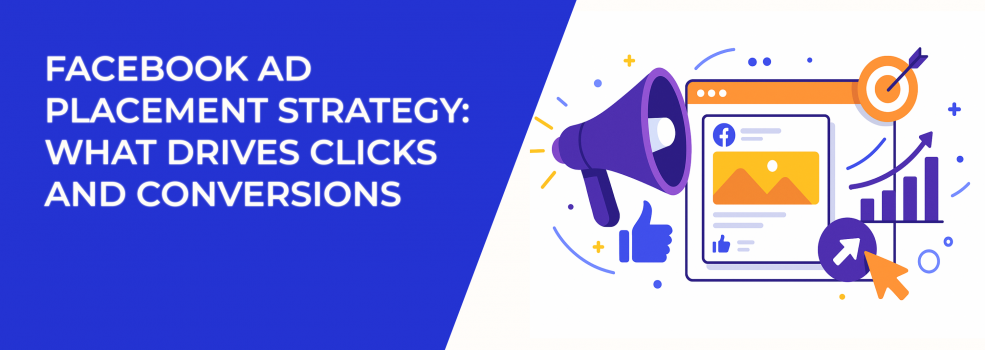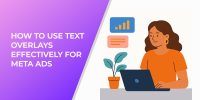When running Facebook and Instagram ads, most advertisers obsess over targeting, copy, and creative. But there's a quiet variable that often makes or breaks your performance: ad placements.
Where your ad appears across Meta technologies — whether in a Facebook Feed, an Instagram Story, or a Reels tab — plays a massive role in determining cost per click (CPC), click-through rate (CTR), and ultimately, conversions.
So what drives real results when it comes to ad placements? And how can you build a placement strategy that actually improves performance?
Let’s dig in.
Why Facebook Ad Placements Matter More Than You Think
Think of placements as digital billboards. Would you pay the same to advertise in a busy downtown street as you would for a small alleyway? Of course not. Yet, many advertisers let Meta auto-place their ads without a second thought.
Ad placements determine where your ads appear across:
-
Facebook (Feeds, Stories, Right Column, Marketplace, Video Feeds, and more),
-
Instagram (Feeds, Stories, Reels, Explore, Search Results),
-
Messenger (Inbox and Stories),
-
Threads (mobile feed only),
-
Meta Audience Network (third-party apps and websites).
Each placement delivers a unique user experience, and understanding the context behind these experiences is essential to getting real results from your campaigns.
Overview of Facebook and Instagram Ad Placements (And How They Perform)
Here’s a detailed look at the major Facebook and Instagram ad placements — where they appear, why they work, and how to use them effectively.
Facebook Feed
-
Where it appears: Facebook mobile app and desktop site feed.
-
Best for: Direct response, retargeting, lead gen.
-
Why it works: Users are in scroll mode and willing to engage with content.
-
Best practices: Use clear headlines, high-quality images or videos, and a strong CTA. Stick to 1:1 or 4:5 aspect ratios and always include captions for video.
Instagram Feed
-
Where it appears: Instagram app and web feed, including desktop.
-
Best for: eCommerce, branding, influencer-focused campaigns.
-
Why it works: Highly visual platform where users engage more intentionally.
-
Best practices: Use polished visuals and lifestyle shots. Square (1:1) or vertical (4:5) creatives perform well. Pair with minimal text and strong product framing.
Facebook and Instagram Stories
-
Where it appears: Full-screen vertical ad space on Stories across apps.
-
Best for: Limited-time offers, flash sales, behind-the-scenes content.
-
Why it works: Immersive format, but quick to skip if not eye-catching.
-
Best practices: Use 9:16 vertical format, bold motion, text overlays, and sound. Add interactive elements like polls or countdowns when possible.
Facebook and Instagram Reels
-
Where it appears: Reels tab on Instagram and Facebook.
-
Best for: Engaging short-form video, trend-based creative, younger audiences.
-
Why it works: Reels are high-engagement and autoplay with audio.
-
Best practices: Keep it under 15 seconds, front-load your hook, and design for vertical (9:16) viewing. Don’t rely on long intros — move quickly.
Facebook Marketplace
-
Where it appears: Marketplace homepage and listing views on Facebook.
-
Best for: Local services, retail products, consumer goods.
-
Why it works: Users are browsing with strong buying intent.
-
Best practices: Highlight price and availability in your image and copy. Use clean, direct product images and make sure your offer is local or practical.
Facebook Right Column
-
Where it appears: Right-hand sidebar on Facebook desktop.
-
Best for: Retargeting or reinforcing brand recognition.
-
Why it works: Low-cost impressions, though less visibility.
-
Best practices: Use static images, bold text, and minimal clutter. CTRs are lower here, but it can help with frequency and recall for warmer audiences.
Facebook and Instagram Search Results
-
Where it appears: Inside native search result experiences.
-
Best for: Keyword-driven discovery, bottom-funnel campaigns.
-
Why it works: Intent-based browsing and content exploration.
-
Best practices: Match ad copy to search behavior. Keep it concise and highly relevant. Use clear product visuals and a direct CTA.
Messenger Inbox and Stories
-
Where it appears: Messenger home tab and Stories interface.
-
Best for: Message-based campaigns, retargeting, support-driven funnels.
-
Why it works: Opens the door to one-on-one conversations.
-
Best practices: Use click-to-message CTAs. Keep creatives simple and direct, ideally with conversational tones that invite user interaction.
Meta Audience Network
-
Where it appears: Banner, native, interstitial, and rewarded video ads across third-party apps.
-
Best for: Awareness, retargeting, app installs.
-
Why it works: Extremely low CPMs and broad inventory.
-
Best practices: Simplify creatives. Test headlines, use clear branding, and monitor traffic quality closely. Consider excluding this for high-value conversions unless proven effective.
Each placement can play a unique role in your funnel — the key is to tailor your strategy and creative to match the intent and context of each one.
Also, not every ad format performs well in every placement. Learn more about Facebook ad formats to avoid mismatched creative that wastes budget.
How Advantage+ Placements Work (And When to Be Cautious)
By default, Meta enables Advantage+ placements (formerly called automatic placements). This system distributes your ads across all eligible platforms and placements based on performance signals and budget optimization.
Benefits include:
-
Broader reach and more impressions,
-
Lower average CPMs,
-
Simplified campaign setup.
But there are risks:
-
Budget may be allocated to low-converting placements like Audience Network or Facebook’s right column,
-
Creative may not fit every format properly,
-
Less transparency around what’s actually driving conversions.
If you’re optimizing for real results, consider testing with manual placements first, then layering in automation once you know where performance lives.
Still not sure when to rely on automation versus manual setup? Here’s a deeper breakdown of when Meta Advantage+ is a smart move and when it’s not.
Testing Placements: A Crucial Step Most Skip
Testing placements isn’t a nice-to-have. It’s foundational to improving ad performance and reducing wasted spend.
Testing placements is essential — this chart shows how performance can vary significantly across Feed, Reels, Marketplace, and Audience Network.
To test ad placements effectively:
-
Run A/B tests using identical audiences but separate placements (e.g., Instagram Feed vs. Instagram Reels).
-
Use breakdown reports in Ads Manager to identify which placements drive the best cost per conversion.
-
Customize creative per placement to avoid format mismatch.
-
Segment performance by device — mobile users behave differently than desktop users, especially when it comes to purchase behavior.
The insights you gain from testing will shape smarter campaigns and more efficient budget allocation.
If you’re not regularly testing placement performance, you’re flying blind. Here’s why ongoing placement testing is essential for campaign optimization.
Pro Tips for Smarter Ad Placement Decisions
If you want to go beyond the basics, here are a few advanced tactics to fine-tune your placement strategy:
-
Use Advantage Campaign Budget (CBO) with manual placements to control delivery without micromanaging spend.
-
Exclude underperforming placements after gathering 7–14 days of data. Always use performance, not assumptions.
-
Monitor ad fatigue in placements like Stories and Marketplace, which can burn out quickly.
-
Filter performance by platform, device, and placement to see deeper patterns in what’s driving results.
Strategic placement decisions, even small ones, can lead to meaningful improvements in ROAS.
Final Thoughts: Placement Is Strategy, Not Just Setup
Too many advertisers treat ad placement like a minor setting — something to breeze past on the way to launching a campaign. But placements determine where your audience sees your message, how they engage, and whether they convert.
So before you hit publish on your next campaign, ask yourself:
-
Where will this ad make the most impact?
-
Does the creative fit the environment it’s going into?
-
What has worked and what hasn’t in past placement data?
Placement isn’t a checkbox. It’s a decision. And the more intentional that decision, the more powerful your campaigns will be.

